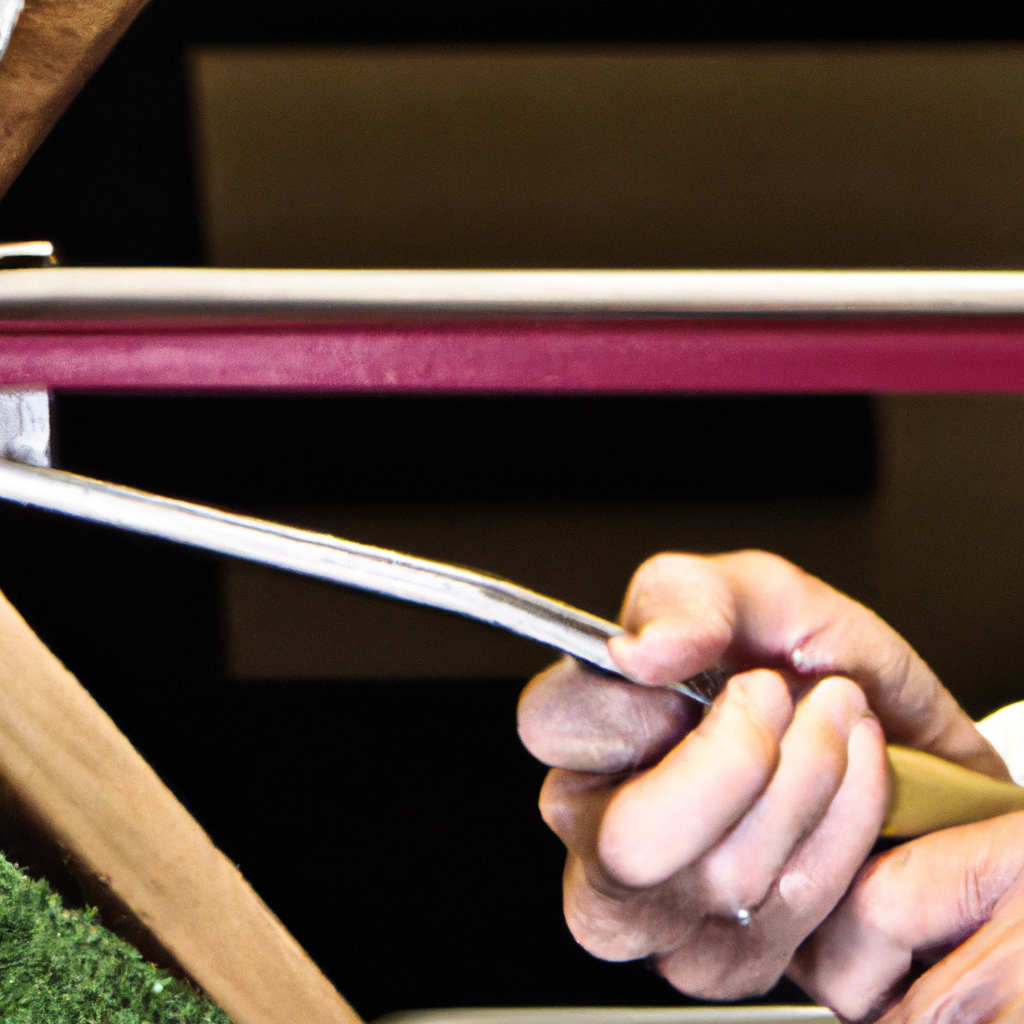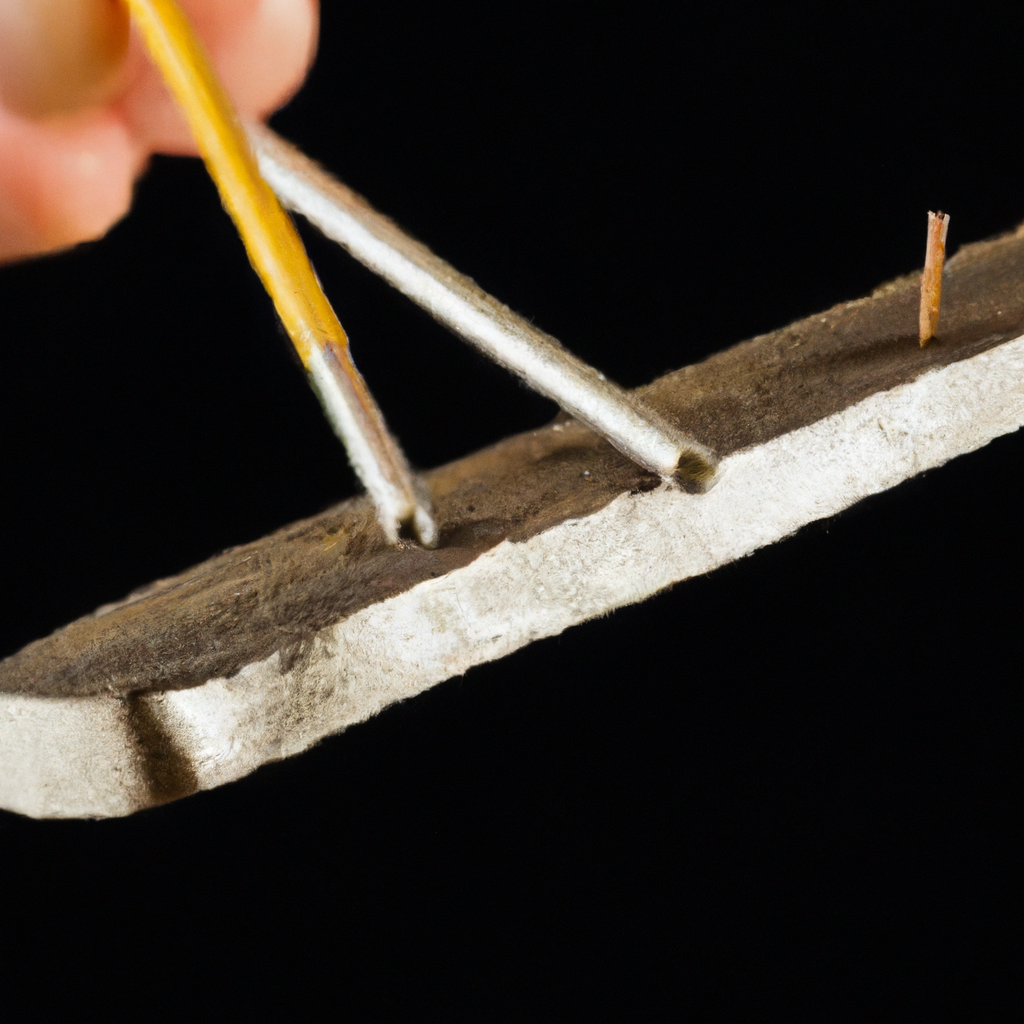If you’ve ever found yourself in need of adjusting the length of your golf club, fear not! This article is here to offer you a step-by-step guide on how to cut a golf shaft with ease. Whether you’re a seasoned golfer or a beginner just getting into the sport, this handy tutorial will provide you with the knowledge and confidence to tackle this task with precision. So grab your tools and get ready to take your golf game to the next level!

Materials Needed
Before you begin cutting a golf shaft, it’s important to gather all the necessary materials. Here’s a list of what you’ll need:
Golf shaft cutting tool
A golf shaft cutting tool is specifically designed to cut through the graphite or steel shafts of golf clubs. It ensures a clean and precise cut without damaging the integrity of the shaft.
Measuring tape or ruler
To determine the desired length of the golf shaft, you’ll need a measuring tape or ruler. This will help you accurately measure from the grip end of the shaft to the cutting point.
Marker or pencil
A marker or pencil will be used to mark the cutting point on the shaft. This ensures that you make an accurate and precise cut.
Safety goggles
Safety goggles are essential to protect your eyes from any debris or flying particles that may occur during the cutting process. Safety should always be a priority, so make sure to wear these goggles throughout the entire process.
Gloves
Using gloves is important to prevent any injuries or cuts to your hands. It also helps maintain a firm grip on the shaft and tools.
Vise clamp
A vise clamp is necessary to secure the golf shaft in place while you cut it. This will provide stability and ensure a clean cut.
Hacksaw or pipe cutter
You have two options when it comes to cutting the golf shaft – using a hacksaw or a pipe cutter. Both tools are effective, but the choice between them depends on personal preference and the type of shaft you are cutting.
Step 1: Measure
The first step in cutting a golf shaft is to measure and determine the desired length. Take your measuring tape or ruler and measure from the grip end of the shaft to the point where you want to make the cut. This measurement will vary depending on your personal preference, swing style, and the type of club you are working with.
Once you have determined the desired length, use a marker or pencil to make a clear and visible mark on the shaft indicating the cutting point. This will serve as a guide during the cutting process and ensure that you achieve the desired length accurately.
Step 2: Prepare the Shaft
After you have measured and marked the cutting point, it’s time to prepare the golf shaft for cutting. Begin by securing the shaft in a vise clamp. This will hold the shaft in place and provide stability throughout the cutting process.
To protect the shaft from any potential damage, wrap a soft material such as cloth or rubber around the clamped area. This will prevent any unwanted marks or scratches on the shaft while it is being cut.
Ensure that the vice clamp is tightened securely and that the clamped area is stable. This will prevent any movement or shifting of the shaft during the cutting process, allowing for a clean and precise cut.

Step 3: Cutting with a Hacksaw
If you have chosen to use a hacksaw to cut the golf shaft, follow these steps:
- Position the hacksaw blade at the marked cutting point on the shaft. Ensure that the blade is perpendicular to the shaft and aligned with the marked line.
- Using a steady motion, cut through the shaft using the hacksaw. Apply gentle pressure and allow the blade to do the work. Avoid applying excessive force, as this can damage the shaft or cause an uneven cut.
- Keep the blade moving in a steady motion to create a clean and even cut. Take your time and be patient, as rushing can lead to mistakes or an uneven cut.
- Pay attention to the cutting angle to ensure that the shaft is being cut straight. This will affect the overall performance and balance of the club, so it’s important to maintain a consistent angle throughout the cut.
- Once the cut is complete, inspect the end of the shaft for any burrs or rough edges. These can be removed using sandpaper or a file to ensure a smooth finish.
Step 4: Cutting with a Pipe Cutter
If you have chosen to use a pipe cutter to cut the golf shaft, follow these steps:
- Place the golf shaft inside the pipe cutter, making sure it is securely inserted.
- Tighten the pipe cutter around the shaft by rotating the cutter’s handle. This will gradually apply pressure to the shaft and create a groove for the cutting process.
- Rotate the pipe cutter around the shaft in a circular motion. Make sure to maintain a steady and consistent pressure as you rotate the cutter.
- Continue rotating the pipe cutter around the shaft until the cut is complete. This may require multiple rotations, depending on the thickness of the shaft and the type of pipe cutter you are using.
- Once the cut is made, inspect the end of the shaft to ensure a clean and even cut. If there are any rough edges or burrs, use sandpaper or a file to smooth them out.
Step 5: Check the Cut
After cutting the golf shaft, it’s important to check the cut to ensure that it meets your desired specifications. Inspect the end of the shaft and verify that it is straight and smooth.
Look for any sharp burrs or unevenness that may affect the functionality of the club. These can be removed using sandpaper or a file to create a clean and polished finish.
Step 6: Finalize the Shaft
Once you have inspected the cut and made any necessary adjustments, it’s time to finalize the golf shaft. Begin by cleaning the cut end of the shaft to remove any debris or particles that may have accumulated during the cutting process.
If you are reinstalling the grip, ensure that it is properly aligned and securely attached to the cut end of the shaft. If you are adding a new grip, follow the manufacturer’s instructions for installation.
Step 7: Test and Adjust
After finalizing the golf shaft, it’s important to test the clubhead attachment and make any necessary adjustments. Attach the clubhead to the cut shaft following the manufacturer’s instructions.
Perform swing tests to assess the performance and feel of the club. If you notice any issues such as a loss of distance, inconsistent ball flight, or discomfort during the swing, it may be necessary to make further adjustments to the length or balance of the shaft.
Step 8: Safety Precautions
Throughout the entire process of cutting a golf shaft, it’s important to prioritize safety. Here are some important safety precautions to keep in mind:
- Always wear safety goggles to protect your eyes from any debris or flying particles that may occur during the cutting process.
- Use gloves to prevent injuries, provide a secure grip, and protect your hands from sharp edges or burrs.
- Be cautious while cutting to avoid accidents. Pay attention to your surroundings, and make sure you have a clear and stable workspace.
Step 10: Practice and Master
Cutting golf shafts requires practice to develop proficiency. With each successful cut, you’ll gain confidence and improve your skills. It’s important to remember that practice makes perfect. The more you practice, the more comfortable you will become at cutting golf shafts.
Repetition is key to mastering this skill. As you continue to cut golf shafts, you’ll develop a deeper understanding of the process, refine your technique, and achieve consistent and accurate results.
So, whether you’re customizing your club or replacing a damaged shaft, follow these step-by-step instructions to cut a golf shaft and unleash your full potential on the golf course! Remember to prioritize safety, take your time, and enjoy the satisfaction of creating a perfectly customized club. Happy cutting!



